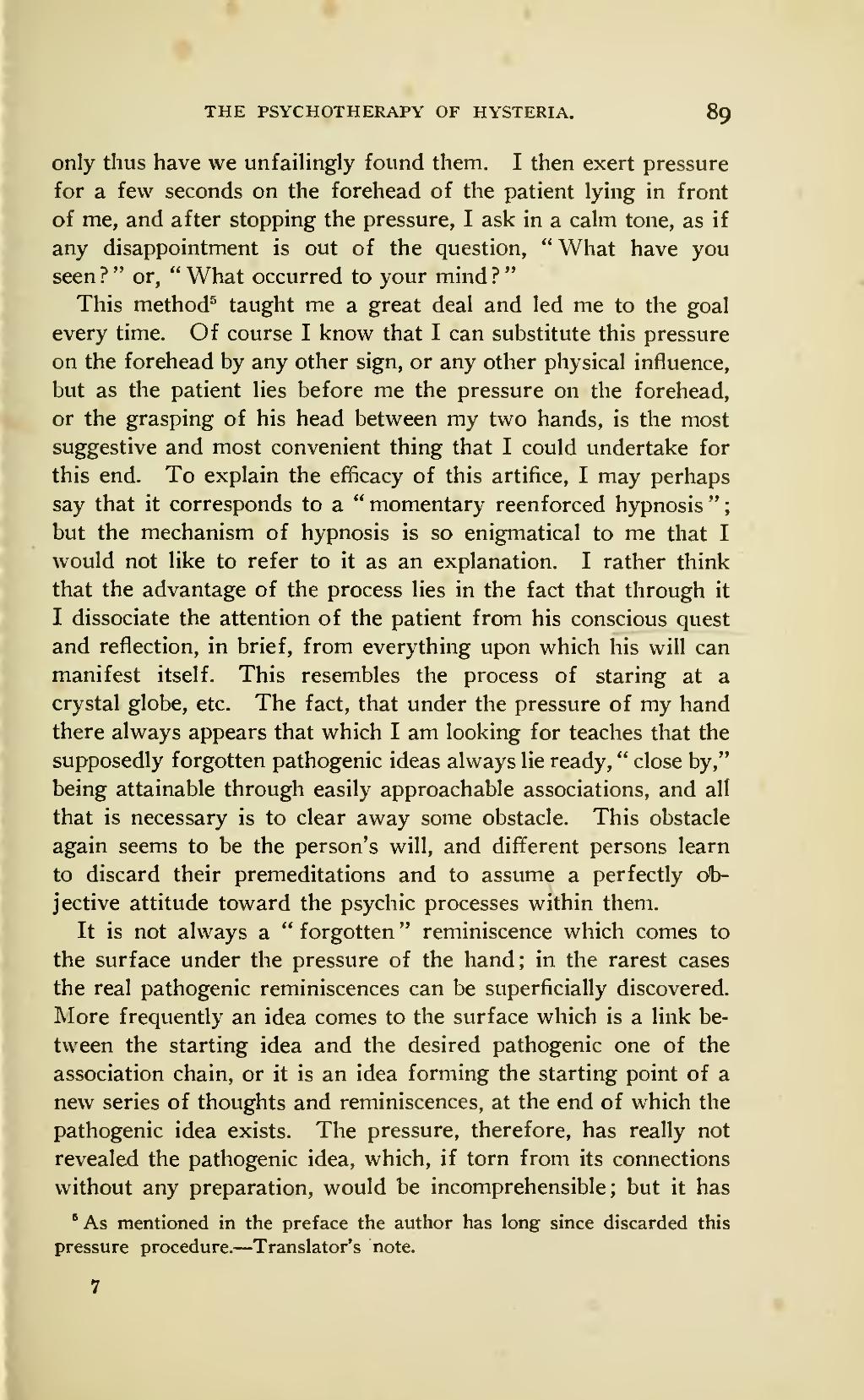only thus have we unfailingly found them. I then exert pressure for a few seconds on the forehead of the patient lying in front of me, and after stopping the pressure, I ask in a calm tone, as if any disappointment is out of the question, "What have you seen?" or, "What occurred to your mind?"
This method[1] taught me a great deal and led me to the goal every time. Of course I know that I can substitute this pressure on the forehead by any other sign, or any other physical influence, but as the patient lies before me the pressure on the forehead, or the grasping of his head between my two hands, is the most suggestive and most convenient thing that I could undertake for this end. To explain the efficacy of this artifice, I may perhaps say that it corresponds to a "momentary reenforced hypnosis"; but the mechanism of hypnosis is so enigmatical to me that I would not like to refer to it as an explanation. I rather think that the advantage of the process lies in the fact that through it I dissociate the attention of the patient from his conscious quest and reflection, in brief, from everything upon which his will can manifest itself. This resembles the process of staring at a crystal globe, etc. The fact, that under the pressure of my hand there always appears that which I am looking for teaches that the supposedly forgotten pathogenic ideas always lie ready, "close by," being attainable through easily approachable associations, and all that is necessary is to clear away some obstacle. This obstacle again seems to be the person's will, and different persons learn to discard their premeditations and to assume a perfectly objective attitude toward the psychic processes within them.
It is not always a "forgotten" reminiscence which comes to the surface under the pressure of the hand; in the rarest cases the real pathogenic reminiscences can be superficially discovered. More frequently an idea comes to the surface which is a link between the starting idea and the desired pathogenic one of the association chain, or it is an idea forming the starting point of a new series of thoughts and reminiscences, at the end of which the pathogenic idea exists. The pressure, therefore, has really not revealed the pathogenic idea, which, if torn from its connections without any preparation, would be incomprehensible; but it has
- ↑ As mentioned in the preface the author has long since discarded this pressure procedure.—Translator's note.
